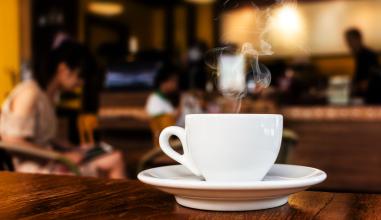Taste of Tippika Coffee introduction to the Variety Grinding scale Manor in the planting Environment
Taste of Tippika Coffee introduction to the Variety Grinding scale Manor in the planting Environment
Yunnan small grain coffee originated from Baoshan Lujiangba, is currently the largest production place in Yunnan, is recognized by the world as one of the origin of fine coffee, mainly iron pickup and Katim two varieties, iron pickup is a traditional variety, low yield, good taste, Katim high yield, slightly poor taste, Katim is Nestle coffee, Starbucks main raw material varieties, Yunnan coffee taste and altitude, about 900 meters relatively light, sour is not obvious The taste of more than 1100 meters is stronger, the sour taste is stronger, the higher the altitude, the more obvious the sour taste. Generally speaking, Yunnan coffee tastes slightly sour, strong but not greasy, more mellow, and the taste is close to that of Blue Mountain Coffee.
Brazilian coffee, produced in Brazil, is sour and bitter, blended by roasting, moderate in medium roasting and strong bitter in deep roasting. It is suitable for blending mixed coffee (more than three kinds of coffee are mixed with other flavors). Brazilian coffee has a low sour taste, combined with sweet and bitter taste, the entrance is extremely smooth, with a hint of fragrant grass.
Mantenin coffee from Sumatra, Indonesia, has a mellow smell, moderate acidity, rich sweetness, very intriguing, suitable for deep baking and emitting a strong aroma.
Yega Xuefei Coffee comes from Ethiopia and is named after the local town. It is 1700-2100 meters above sea level. It is a fine Ethiopian coffee. Yega Xuefei is petite, but it is soft, delicate and sweet, and its flavor is unique. Shallow roasting has a unique lemon, flower and honey-like sweetness, soft acidity and citrus taste, fresh and bright taste, rich texture and unique soft floral flavor.
After drinking the original, simple coffee, we approached what is known as the oldest coffee forest in China. At this time, the ancient coffee trees have produced clusters of coffee beans, although they will not mature until next month, but some of them will show bright red. Qi Fenghua said that this forest is considered to be the oldest ancient coffee forest in China. There are 1134 plants in 13 mu, 24 of which have a history of more than 100 years, which were introduced and planted by French missionaries when they built a church in Zhu Kula in 1892. Local Tan Jialin said: "the reason why the 13 mu ancient coffee forest in Zhukula area is listed as the oldest coffee forest in China is that it has 24 ancient coffee trees more than 100 years old, all of which are pure Yunnan small-grain coffee. Its superior quality is very rare. It is the ancestor of Chinese coffee, especially Yunnan small-grain coffee, and has extremely high scientific research value and industrial development value."
Yunnan has a long history of growing coffee and has a unique climate advantage. Yunnan small grain coffee has the characteristics of strong but not bitter, fragrant but not greasy, slightly sour and so on. According to the International Coffee Organization, Yunnan small-grain coffee is similar to Colombian small-grain coffee in quality, and its products are highly competitive in the market. At present, 95% of China's coffee raw materials are produced in Yunnan. Therefore, Yunnan's coffee industry has a far-reaching impact on the development of China's coffee industry.
Zhukula Village is located on the hillside of the Yupao River, surrounded by green coffee forests. At this time, the clear sunshine of late autumn is shining warmly on the whole mountain village, as if it had been plated with a layer of gold, and there is still mist on the top of the hills. this is Zhu Kula, which is regarded as a paradise.

Important Notice :
前街咖啡 FrontStreet Coffee has moved to new addredd:
FrontStreet Coffee Address: 315,Donghua East Road,GuangZhou
Tel:020 38364473
- Prev

Description of Water washing Flavor of shallow roasted Coffee beans in the Sun
Description of washing flavor of light roasted coffee beans in the sun the process of taste treatment introduces that when roasting with a mixture of different coffee or different raw coffee beans, and want to use the depth of roasting to control the ideal taste, frequent testing is needed. Mixed shallow fried beans show different special tastes than single deep fried beans. Deep fried beans release more fatty acids and their extracts, which can make coffee
- Next

Introduction to the ratio parameters of time powder and grinding degree in the production method of espresso
Italian Coffee extraction Calibration time Powder Grinding introduction extraction of a cup of good concentration, the need for stable pressure, appropriate water temperature, appropriate grinding degree, suitable powder content and so on. Then what is appropriate? For example, WBC stipulates that 1 Espresso is 1oz (25~35ml, including Crem).
Related
- Beginners will see the "Coffee pull flower" guide!
- What is the difference between ice blog purified milk and ordinary milk coffee?
- Why is the Philippines the largest producer of crops in Liberia?
- For coffee extraction, should the fine powder be retained?
- How does extracted espresso fill pressed powder? How much strength does it take to press the powder?
- How to make jasmine cold extract coffee? Is the jasmine + latte good?
- Will this little toy really make the coffee taste better? How does Lily Drip affect coffee extraction?
- Will the action of slapping the filter cup also affect coffee extraction?
- What's the difference between powder-to-water ratio and powder-to-liquid ratio?
- What is the Ethiopian local species? What does it have to do with Heirloom native species?

